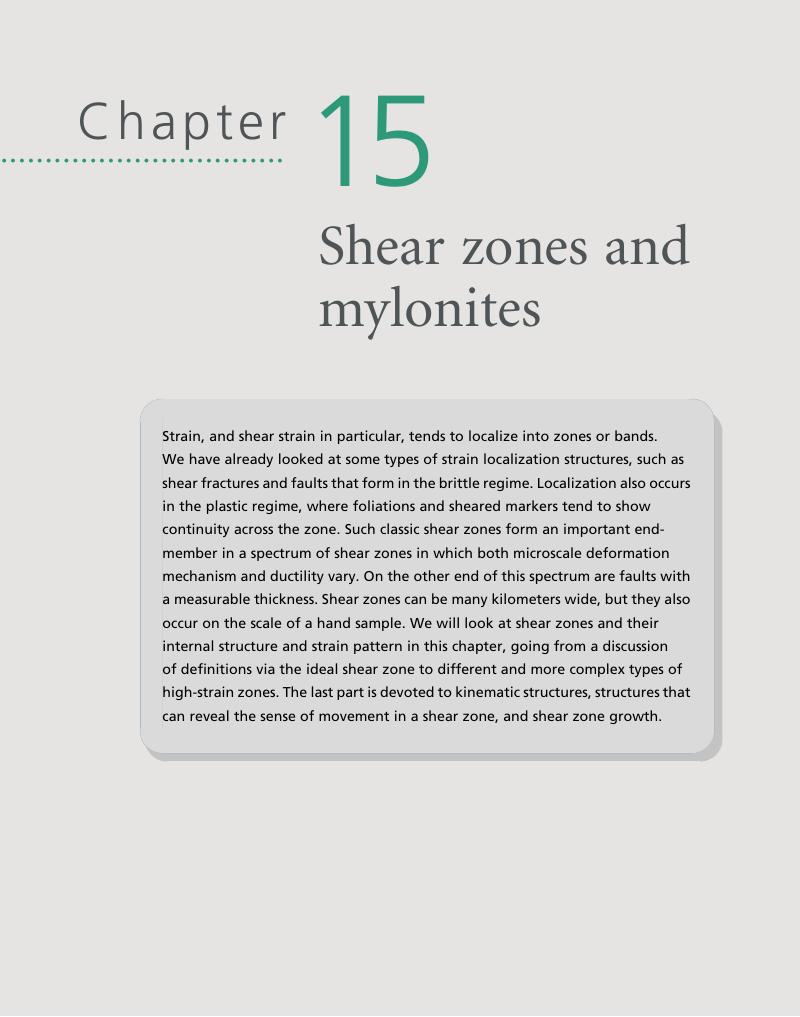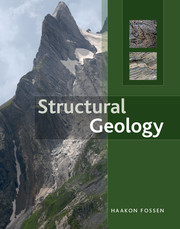Book contents
- Frontmatter
- Contents
- How to use this book
- Preface
- Acknowledgments
- List of symbols
- 1 Structural geology and structural analysis
- 2 Deformation
- 3 Strain in rocks
- 4 Stress
- 5 Stress in the lithosphere
- 6 Rheology
- 7 Fracture and brittle deformation
- 8 Faults
- 9 Kinematics and paleostress in the brittle regime
- 10 Deformation at the microscale
- 11 Folds and folding
- 12 Foliation and cleavage
- 13 Lineations
- 14 Boudinage
- 15 Shear zones and mylonites
- 16 Contractional regimes
- 17 Extensional regimes
- 18 Strike-slip, transpression and transtension
- 19 Salt tectonics
- 20 Balancing and restoration
- 21 A glimpse of a larger picture
- Appendix A More about the deformation matrix
- Appendix B Stereographic projection
- Glossary
- References
- Cover and chapter image captions
- Index
- References
15 - Shear zones and mylonites
- Frontmatter
- Contents
- How to use this book
- Preface
- Acknowledgments
- List of symbols
- 1 Structural geology and structural analysis
- 2 Deformation
- 3 Strain in rocks
- 4 Stress
- 5 Stress in the lithosphere
- 6 Rheology
- 7 Fracture and brittle deformation
- 8 Faults
- 9 Kinematics and paleostress in the brittle regime
- 10 Deformation at the microscale
- 11 Folds and folding
- 12 Foliation and cleavage
- 13 Lineations
- 14 Boudinage
- 15 Shear zones and mylonites
- 16 Contractional regimes
- 17 Extensional regimes
- 18 Strike-slip, transpression and transtension
- 19 Salt tectonics
- 20 Balancing and restoration
- 21 A glimpse of a larger picture
- Appendix A More about the deformation matrix
- Appendix B Stereographic projection
- Glossary
- References
- Cover and chapter image captions
- Index
- References
Summary

- Type
- Chapter
- Information
- Structural Geology , pp. 285 - 310Publisher: Cambridge University PressPrint publication year: 2010
References
- 1
- Cited by



